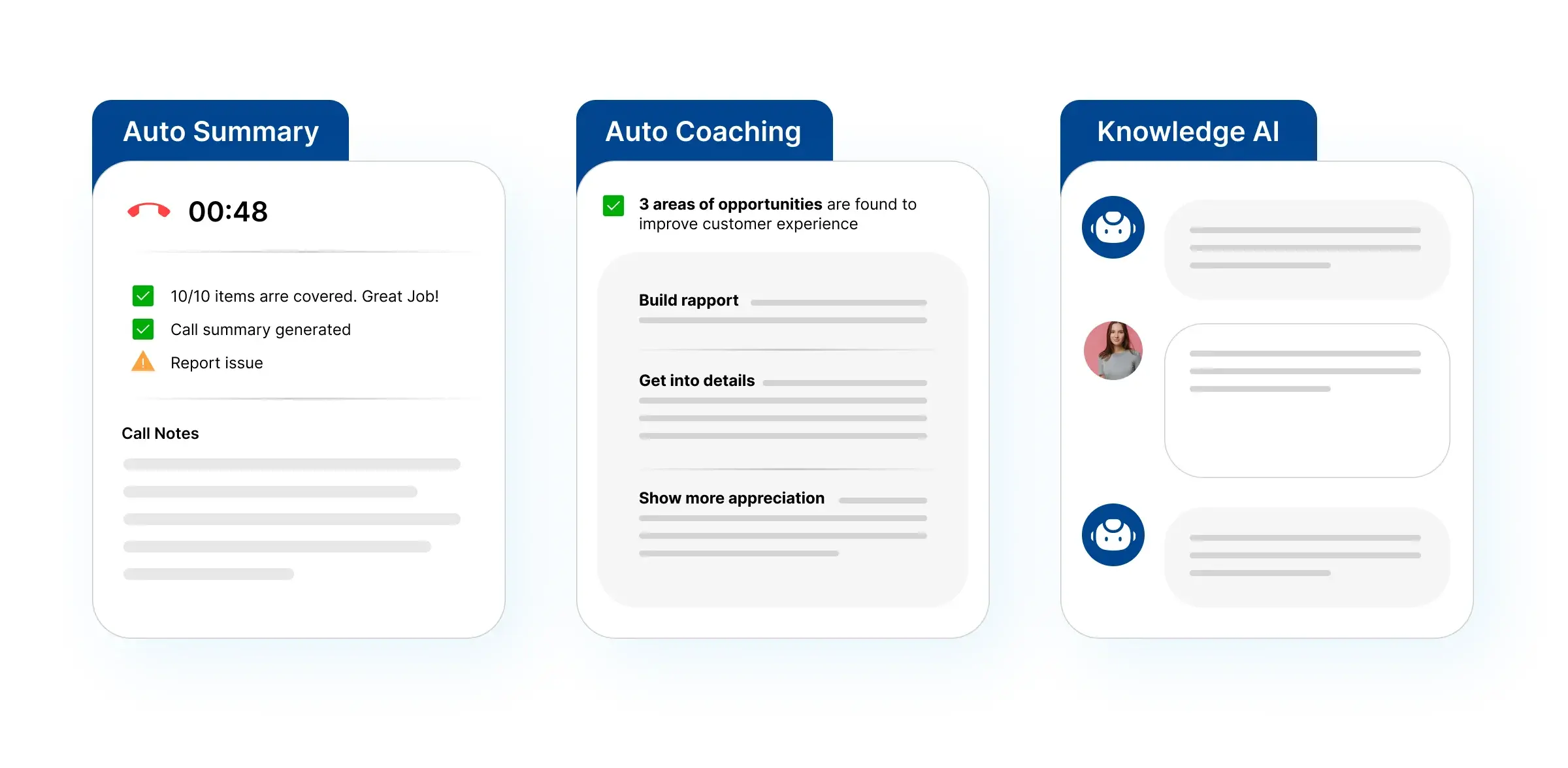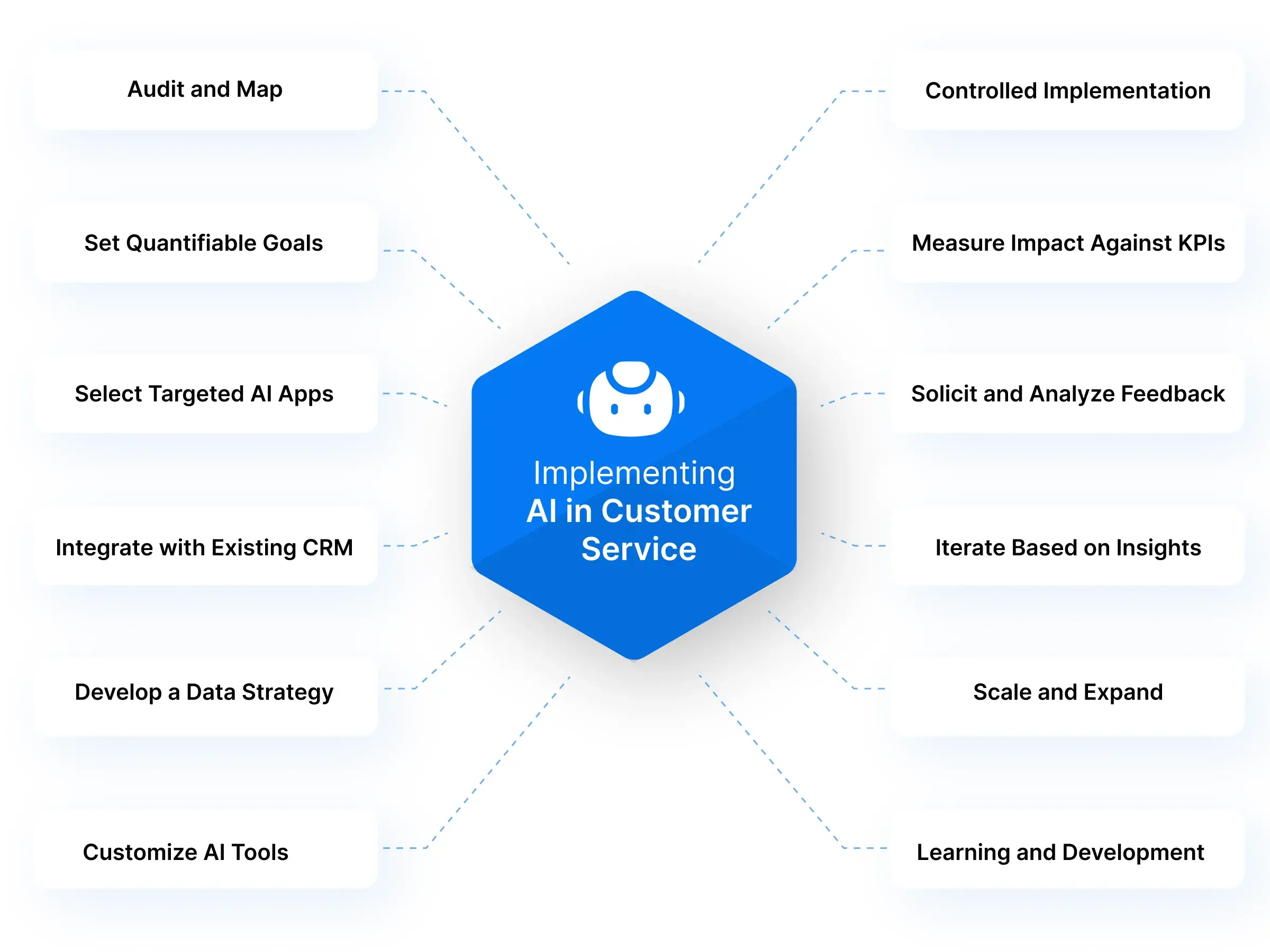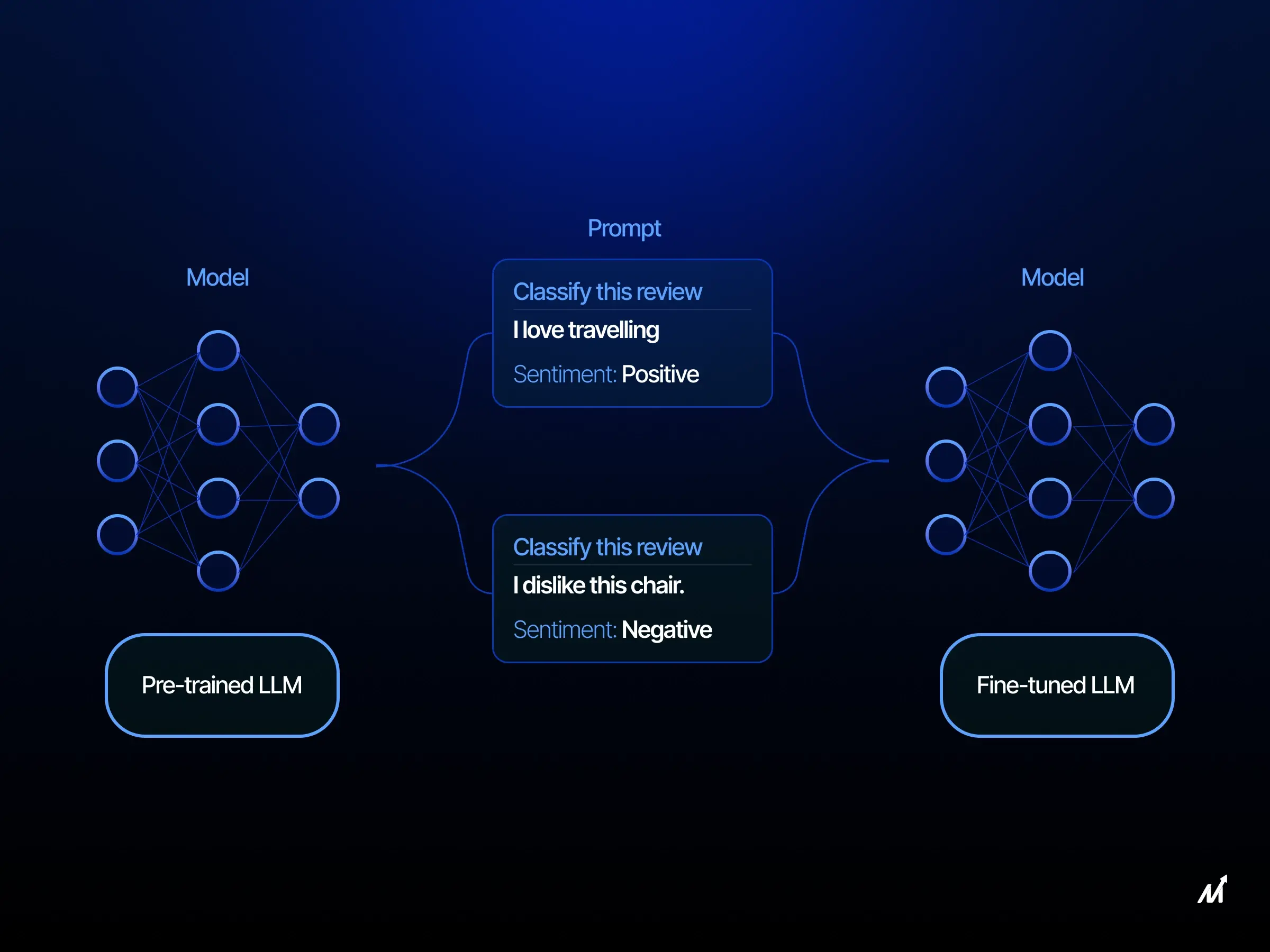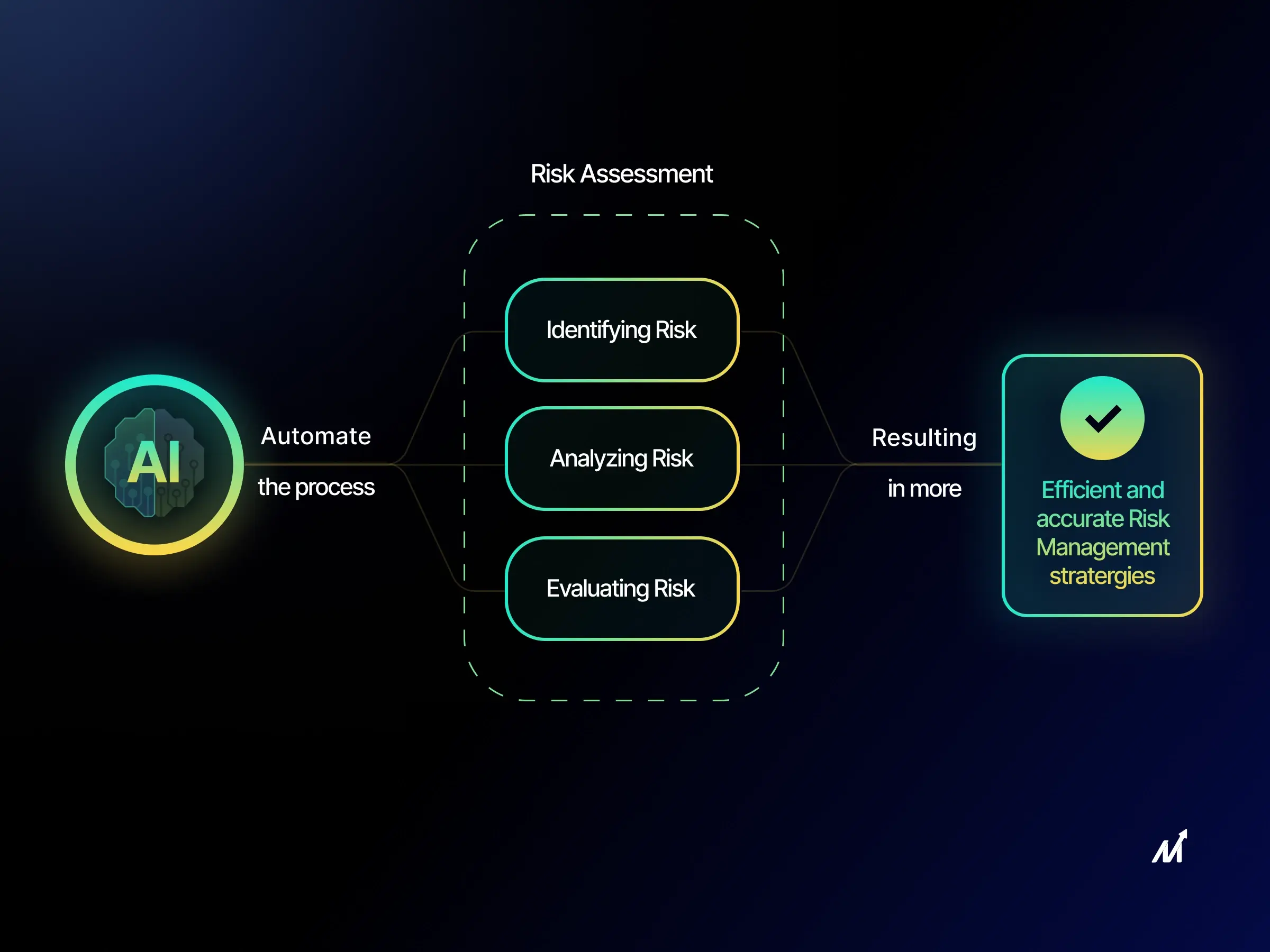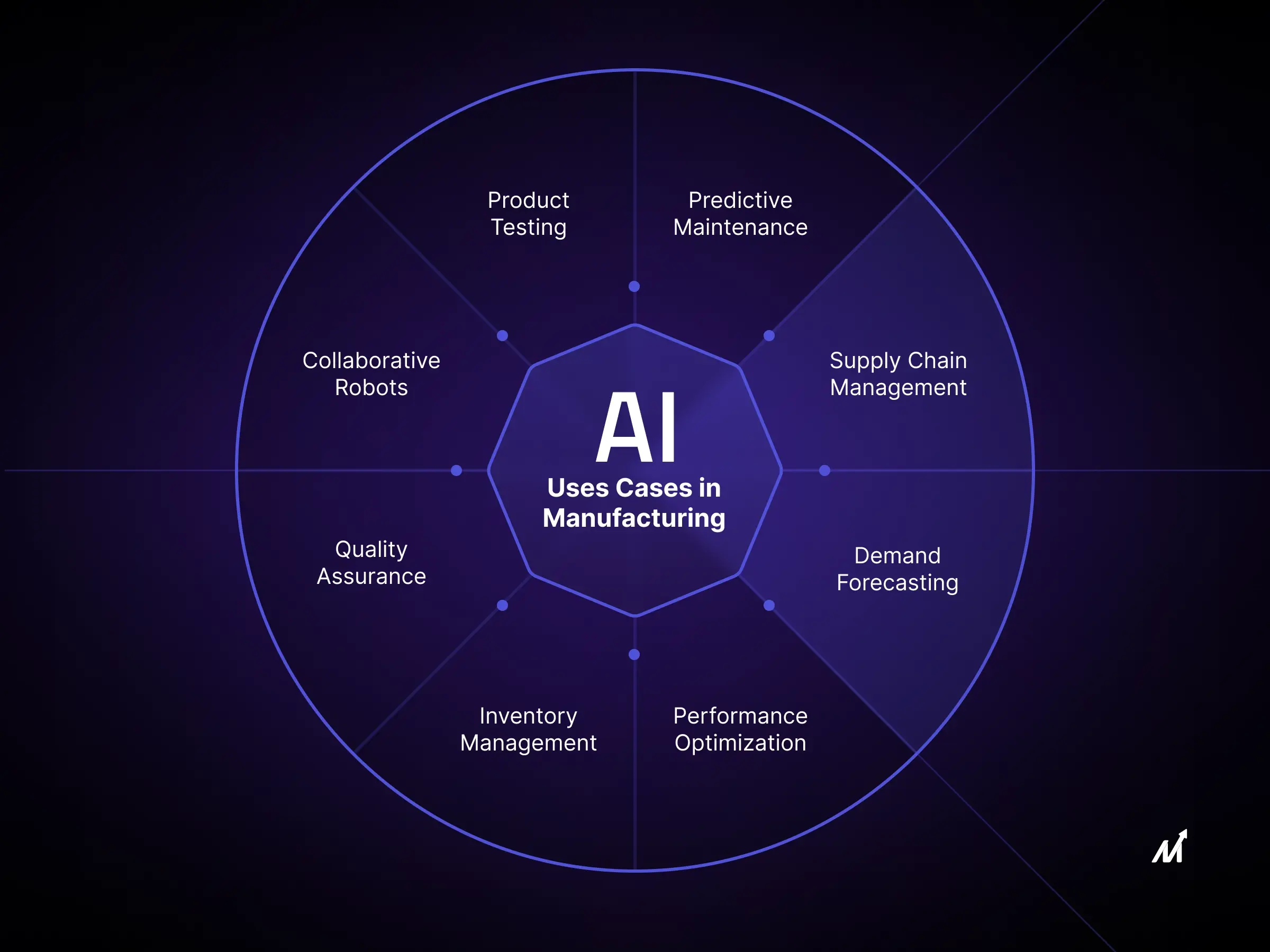In the past few years, customer service departments have been under much pressure. They deal with tight budgets and customers who expect quick, high-quality service. Their big question is: how can they provide better service with fewer resources? The answer lies in using Artificial Intelligence (AI) in customer service.
Here’s what’s happening: customer service has become more challenging since the pandemic. Customers now value fast service – 72% say they stick with brands that serve them quickly. At the same time, 78% of customer service agents find it tough to be quick and good at their job. This pressure has led to a high turnover rate in customer service jobs, about 19%.
AI in customer service isn’t a new idea, but a new type called generative AI is getting a lot of attention. This AI can create responses and interact in more human-like ways. Businesses are now looking at how this AI can improve customer service. For businesses and entrepreneurs, it’s about understanding how AI works, its benefits, and how to use it to improve customer service.
Incorporating Artificial Intelligence (AI) into Customer Support Operations
Artificial Intelligence (AI) is revolutionizing customer support by integrating AI-driven chatbots into various communication platforms. These bots are designed to enhance the customer experience significantly. They perform various functions, from greeting clients to providing detailed articles from the knowledge base, guiding through standard business procedures, dispatching field technicians for on-site assistance, and efficiently escalating intricate inquiries to specialized personnel.
Businesses are quickly catching on. Since 2020, the use of AI in customer service has jumped from 24% to 45%.
Here’s How AI Makes a Difference in customer service:
- Makes Teams More Productive: AI chatbots handle routine questions, letting support staff focus on more complex issues. This can make the team 14% more productive.
- Saves Time and Reduces Mistakes: Without AI, Staff spend lots of time on tasks like looking up customer info or typing out responses. AI takes over these jobs, making things faster and reducing errors.
- Gives Customers a Personal Touch: AI quickly pulls up all the customer’s info during a chat. This means the service feels more personal, even if a field technician needs to get involved.
- Keeps Staff Happy: Dealing with the same questions all day can be dull. AI handles these so Staff can do more interesting work. This can make the job more satisfying and reduce burnout.
- Helps Stay a Step Ahead: AI uses customer data to suggest next steps, like when to renew a service or when a maintenance check is due. It can even help create helpful articles for future reference.
In short, AI in customer service is about making things easier and more efficient for businesses and their customers.
Using Generative AI to Make Customer Service Better
Businesses can use AI in several simple yet effective ways to improve how they help their customers:
- Fast, Tailored Responses to Customer Questions: AI helps your team quickly answer customer questions in a way specific to each customer. It does this by using information about the customer, helpful content from your knowledge base, or data from other trusted sources. This works on all kinds of communication channels.
- Quick Summaries and Briefs for Mobile Workers: AI can make your customer service team more efficient. It does this by automatically creating customer interaction summaries using the case details and past interactions. This is useful for people working in the field, as it quickly gives them the key information they need.
- Building and Using a Knowledge Base: You can connect AI to your service system. It can start writing articles for your knowledge base using details from customer conversations and data from your CRM. Your team can then review and finish these articles. This saves time and makes it quicker to get helpful articles out. Plus, these articles can be used in a self-service portal, helping customers find answers independently.
- Finding Answers Quickly: When your team or customers are looking for answers, AI can help by finding the right information from your knowledge base and showing it right in the search results. This saves time for everyone.
Benefits of AI in Customer Service
Incorporating AI into customer support operations elevates service quality and efficiency, catering especially to enterprises embarking on their journey with generative AI. Let’s dissect five pivotal impacts of AI on customer service, targeted towards the business and enterprise sector:
- Enhanced Operational Productivity: 84% of IT leaders agree that AI is instrumental in augmenting customer service capabilities. For instance, AI-driven chatbots have been shown to boost support agent efficiency by approximately 14%.
- Streamlining Efficiency: Traditional manual tasks can overburden service agents with many customer interactions. This includes navigating multiple systems, accessing customer histories, sourcing information from knowledge bases, coordinating field service logistics, and crafting responses manually – all prone to human error. AI intervention in these areas promises intelligent, data-driven recommendations and conversational insights, which speed up service delivery. Recent studies indicate that 63% of service professionals anticipate AI to expedite customer interactions.
- Personalized Service Interactions: AI’s real-time data processing abilities, such as identifying customer details like name, location, account specifics, and language preferences, enhance customer engagement. AI can convey critical information to technicians for field service requests, ensuring a tailored service from the outset.
- Reducing Agent Burnout and Elevating Morale: By automating repetitive and mundane tasks, AI frees agents to concentrate on complex, creative problem-solving and critical thinking tasks, ultimately enhancing the customer experience. 79% of IT leaders believe that generative AI can significantly decrease team workload and mitigate burnout.
- Proactive Service Approach: AI’s ability to analyze customer contracts, purchase history, and marketing data allows for predictive service actions. AI can suggest renewal reminders and maintenance schedules for post-service engagement or inform about available upgrades or promotions. Furthermore, generative AI can synthesize customer interactions into knowledge-based articles, enriching future reference materials.
Key Points for Businesses Implementing AI in Customer Service
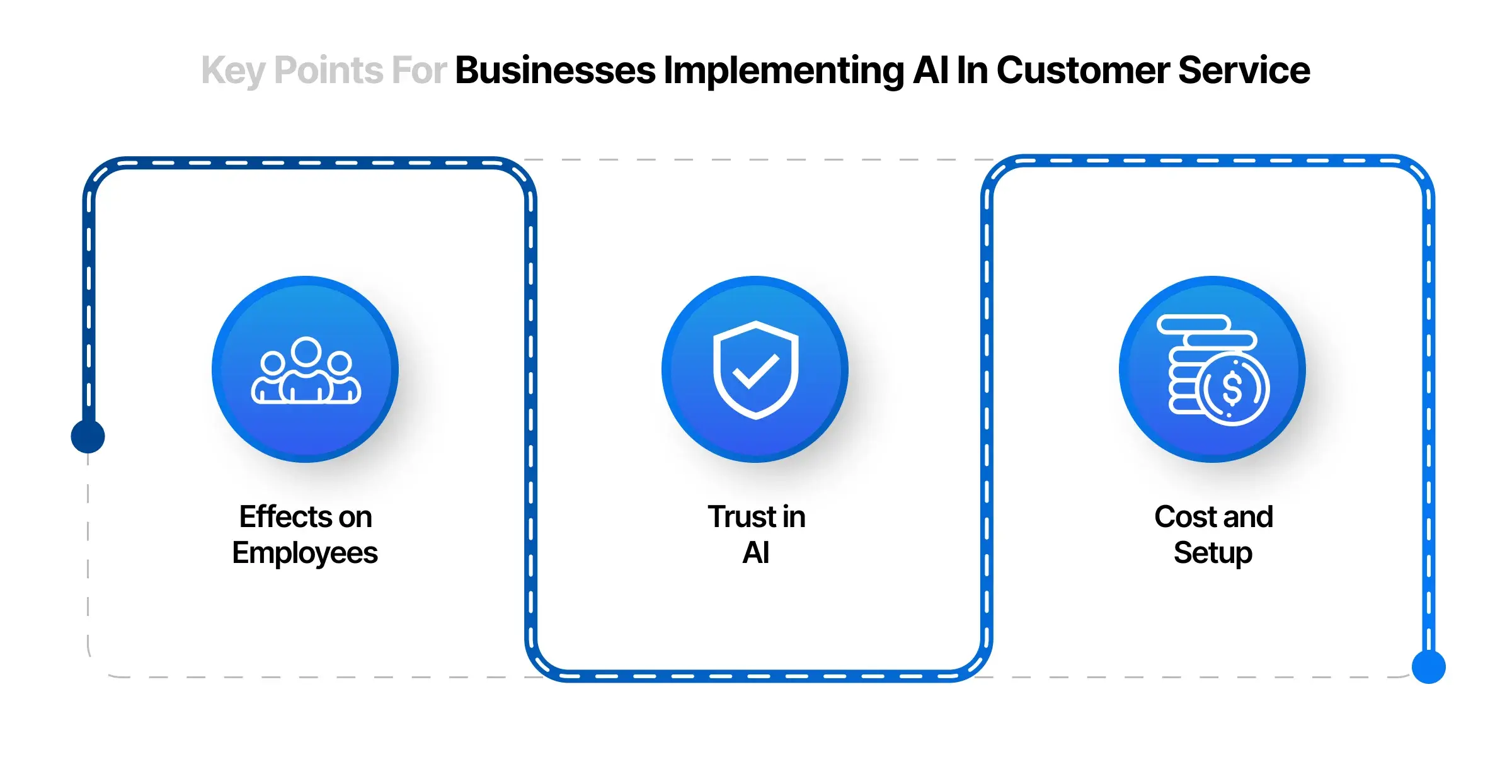
The use of Artificial Intelligence (AI) in customer service is growing, but it’s still new for many. Recent findings show that only about 45% of service industry decision-makers use AI. There are a few main reasons why more businesses haven’t started using AI yet:
- Effects on Employees: AI, especially the newer generative AI, is a field that many service leaders and their teams are still learning. For instance, 66% of leaders think their teams lack AI knowledge. There’s also a worry among employees that AI might replace their jobs. It’s important to explain to your team that AI is there to help them work better, not to take their jobs. It’s about using AI to enhance the great work your team already does for customers.
- Trust in AI: AI is improving fast but not perfect. Many AI systems use data that’s up to two years old. This can raise questions about how well AI understands complex customer questions or handles sensitive information. It’sTaking privacy and trust seriously is crucial, ensuring your AI system is secure and uses reliable data. You can overcome these issues by basing your AI on trusted customer relationship management (CRM) data.
- Cost and Setup: Creating your AI system or bringing in an AI tool from outside can be expensive. It means investing in technology and training. This can be hard for small businesses or those with limited budgets. Plus, setting up and maintaining AI systems needs technical skills that some businesses might not have. Talk to AI consultants for more information.
For businesses and entrepreneurs looking to use AI in customer service to understand these challenges and find ways to address them.
Use Cases: Artificial Intelligence (AI) for Customer Service Excellence
Explore eleven innovative strategies for integrating AI into customer service operations.
1. Automated Interaction Agents
Beyond traditional chatbots, these advanced AI-driven agents are crucial in modern customer service. They precisely interpret customer queries and provide exhaustive, step-by-step solutions, ensuring round-the-clock support. This not only elevates the customer experience but also boosts service teams’ productivity. For example, Consider a sophisticated AI like ChatSpot from HubSpot, which, integrated within CRM systems, empowers service professionals to execute tasks such as email management and bespoke report creation via conversational interfaces.
2. Enhanced Messaging Assistance
These systems identify when customer service agent intervention is necessary for customer service, particularly for complex or sensitive matters. They seamlessly integrate AI’s efficiency with the warmth and understanding of human interaction, offering a balanced approach to customer service. This approach considers that while AI agents are adept at processing requests, they cannot fully replicate the empathetic connection that human agents provide. Advanced messaging systems thus ensure that customers receive personalized and empathetic service, especially in scenarios that require a nuanced understanding of the customer’s needs.
3. Emotional Response Analysis
Advanced AI systems, equipped with natural language processing capabilities, can analyze and respond to the customer’s emotional state. This ability to gauge and adapt to a customer’s mood in real time helps de-escalate potential conflicts and enhances the overall interaction experience. Tools like Grammarly’s tone detector are employed to analyze the tone of customer communication preemptively. This allows the AI to tailor its responses, ensuring they are appropriate and sensitive to the customer’s current emotional state, thereby fostering a more understanding and effective communication environment.
4. Intelligent Request Allocation
AI-powered systems can intelligently categorize customer inquiries based on factors such as urgency and subject matter. By efficiently directing these inquiries to the most appropriate service agents, AI ensures that customer needs are addressed promptly and effectively. For instance, complex or technical inquiries could be automatically routed to more experienced agents, while newer team members could handle routine questions. Additionally, AI can identify and prioritize time-sensitive issues, ensuring they are dealt with immediately.
5. AI-Powered Self-Help Solutions
The development of an extensive and informative self-help knowledge base is streamlined through AI writing assistants. These tools can generate detailed and accurate content for FAQs, help articles, and support documentation, enhancing the availability and quality of self-service options for customers. AI content creation tools can be integrated into platforms like HubSpot, allowing for the automatic generation and updating of help content across various channels. This not only improves the reach and quality of self-service resources but also reduces the workload on customer service teams.
6. Voice Command Interpretation
Voice AI technology has revolutionized phone-based customer service. It enables efficient handling of routine queries through predictive routing and interactive voice responses, freeing up human agents to deal with more complex issues. Implement voice AI to manage basic service inquiries like account information or simple troubleshooting. For more complex or sensitive issues, the system can automatically route calls to human agents, ensuring that customers always receive the most appropriate level of support.
7. Seamless Multi-Channel Support
AI enables seamless customer service across various channels, ensuring consistency and effectiveness regardless of how customers choose to engage. This integrated approach directs customers to the most suitable channel based on real-time availability and the specific nature of their inquiries. Real-time monitoring and adjustment of channel availability can be implemented to prevent customer frustration. For example, if live chat support is unavailable, the AI system can direct customers to email or phone support, ensuring that they always have access to assistance.
8. Internal Data Analytics
AI’s capabilities extend to internal operational enhancements, particularly in integrating with CRM systems. This integration provides service agents with immediate access to relevant customer information, allowing for more proactive and personalized service. AI tools can monitor customer engagement patterns, flagging significant changes or trends. This enables service teams to respond promptly and appropriately, often pre-empting customer issues before they escalate.
9. Cross-Linguistic Communication
For businesses operating on a global scale, AI-driven tools that support multiple languages are invaluable. They can automatically translate customer messages in real-time, ensuring effective communication across language barriers. Assess and incorporate customer language preferences through detailed customer profiles or survey analysis. This information can be used to tailor the AI system, ensuring it provides support in the languages most commonly used by the customer base.
10. Predictive Customer Behavior Analysis
Machine learning, a key component of AI, is adept at analyzing vast amounts of data to predict customer trends and preferences. This predictive capability is crucial for developing proactive and tailored customer communication strategies. Use machine learning algorithms to analyze patterns in customer inquiries and interactions. This analysis can then inform the AI’s responses, ensuring they are relevant and customized to individual customer needs based on their historical interaction data.
11. Advanced Call Transcription
AI-enhanced transcription of customer calls offers many insights for improving customer service. By providing detailed and accurate transcriptions of customer interactions, these tools enable more effective training and identification of recurring service themes. These transcriptions offer invaluable data for resolving disputes and understanding customer needs more deeply. For instance, tools like CallRail’s conversation intelligence software can analyze transcriptions to identify common concerns or issues, enabling targeted improvements in service and communication strategies.
(Also read about Top 23 Use Cases and Applications of AI in Logistics in 2023)
Implementing AI in Customer Service: A Tactical Approach
Implementing AI in customer service is a straightforward process with the right tools and guidance, as outlined in the following steps.
1. Audit and Map Your Customer Service Workflow
Start with a detailed audit of your current customer service workflow. Identify key touchpoints, response times, common queries, and pain points. This mapping will highlight specific areas where AI can have the most impact.
2. Set Quantifiable Goals
Define clear, measurable objectives for AI integration. This could include metrics like reducing average response time by 30%, increasing first contact resolution rate, or enhancing customer satisfaction scores by a certain percentage.
3. Select Targeted AI Applications
Based on your workflow audit and goals, choose specific AI applications. For instance, if reducing response time is a priority, an AI chatbot for handling initial customer queries could be ideal. For enhancing personalization, an AI tool that analyzes customer data to provide tailored recommendations might be more suitable.
4. Integrate with Existing CRM
Ensure the chosen AI tools can seamlessly integrate with your existing Customer Relationship Management (CRM) system. This integration is crucial for a holistic view of customer interactions and data-driven AI responses.
5. Develop a Data Strategy
AI relies on data. Develop a strategy to utilize existing customer data effectively while ensuring compliance with data protection regulations. Determine how AI will access, process, and store data.
6. Customize AI Tools
Instead of a one-size-fits-all approach, customize the AI tools to your specific customer service scenarios. This could involve training AI models on your specific product/service jargon, typical customer queries, and preferred resolution methods.
7. Run a Controlled Implementation
Implement the AI solution in a controlled environment initially. Choose a segment of your customer service—perhaps one product line or one communication channel—for initial deployment. This approach allows for close monitoring and quick troubleshooting.
8. Measure Impact Against KPIs
Define Key Performance Indicators (KPIs) to measure the impact of AI on your customer service. Track metrics like query resolution time, customer satisfaction scores, and the rate of query escalation to human agents.
9. Solicit and Analyze Feedback
Regularly collect feedback from both customers and customer service agents about their experiences with the AI system. Use this feedback to identify any shortcomings or areas for improvement.
10. Iterate Based on Insights
Use the collected data and feedback to refine and optimize the AI system. Make iterative improvements, addressing any technical issues and enhancing user experience.
11. Scale and Expand
Once the AI system proves effective in the initial implementation, plan for scaling it up. Consider expanding its capabilities to handle more complex queries or integrating additional AI tools for other aspects of customer service.
12. Invest in Continuous Learning and Development:
AI systems evolve. Invest in ongoing training for your team and continuous development of the AI system to adapt to changing customer needs and technological advancements.
By following this concrete, step-by-step approach, you can effectively implement AI in your customer service processes, significantly improving efficiency and customer satisfaction.
Improve Your Customer Service with Markovate
Businesses must understand that their customers are looking for quick solutions and clear answers, not just confusing chats. Inevitably, seeking support is often a necessity rather than a choice. A subpar customer service encounter can exacerbate an already difficult situation. Hence, delivering outstanding customer care is imperative, not just preferable. Clients anticipate swift, tailored, and intelligent interactions, regardless of their engagement method – be it a phone call, website visit, or mobile app usage.
Markovate offers Artificial Intelligence (AI) development services to mitigate the challenges inherent in conventional support systems. This enables the provision of superior customer care through automated, self-help solutions and responses. By incorporating AI in customer service, businesses can elevate standard support to a level of exceptional care, offering clients immediate, precise, and personalized assistance at any time and place, facilitated through conversational AI. This approach not only streamlines the customer experience but also sets a new standard in client interaction and satisfaction.
FAQs
1. How Does AI Improve Customer Response Times Without Compromising Quality?
AI significantly enhances response times by instantly handling routine queries and issues, which are often a large portion of customer service interactions. Advanced AI systems, like chatbots, use pre-programmed responses and machine learning to provide accurate, helpful answers. For complex queries where human intervention is essential, AI efficiently routes these to the appropriate team members, reducing the overall response time. Moreover, AI continually learns from interactions, ensuring that the quality of responses improves over time, maintaining a high standard of service.
2. Can AI in Customer Service Handle Multilingual Support Efficiently?
Yes, one of the key strengths of AI in customer service is its ability to support multiple languages effectively. AI systems equipped with language processing capabilities can understand, respond to, and even proactively communicate in various languages. This not only broadens the reach of customer service to non-English speaking customers but also ensures accuracy in communication. AI-driven translation and natural language processing tools constantly evolve, making them increasingly reliable for multilingual support.
3. How Does Implementing AI in Customer Service Affect the Workload and Roles of Human Agents?
Implementing AI in customer service fundamentally reshapes the workload and roles of human agents, typically positively. AI takes over repetitive, routine tasks, allowing human agents to focus on more complex, nuanced customer issues that require empathy, creative problem-solving, and a human touch. This shift can lead to more fulfilling work for agents and opportunities for skill development. Additionally, AI provides valuable insights and data analysis, helping agents to understand customer needs better and improve the overall quality of service they provide.


